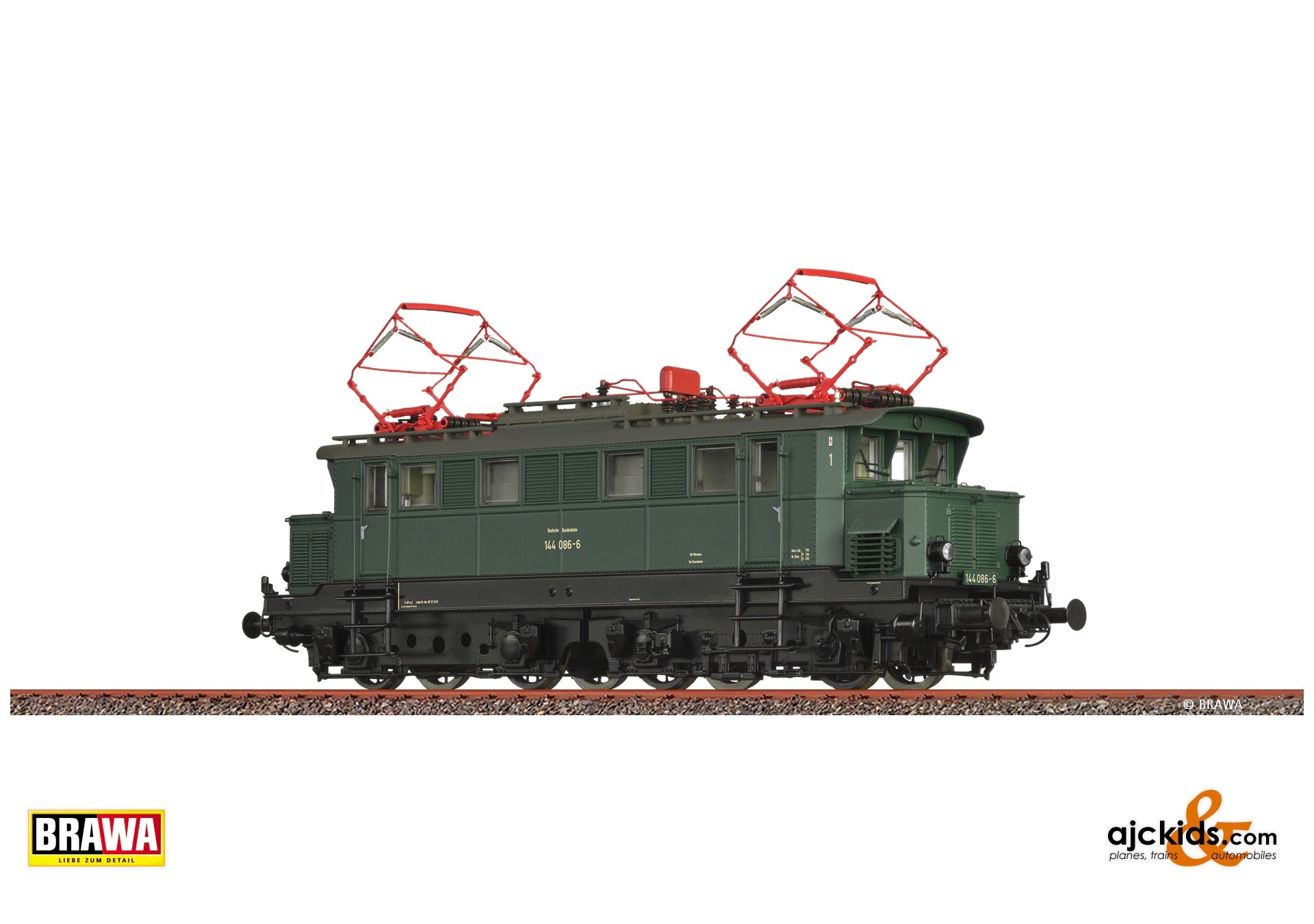Brawa 43453 - H0 Electric Locomotive BR 144 DB
At the end of the 1920s, it became clear that Deutsche Reichsbahn Gesellschaft (DRG) would have to acquire new electric locomotives, among other things, to accelerate its goods traffic. The need to increase maximum speeds to at least 80 km/h could not be met with the most recently purchased E77 and E75 series since the standard drive technology by means of bars and additional trailing wheelsets did notallow for higher speeds. The good experiences from abroad and with the two Bavarian EG 1 with the Bo'Bo' two-bogie locomotives convinced the DRG to deviate from single-frame construction as well. The arrival of the world economic crisis in 1929, however, put a halt to this plan by interrupting the cost-intensive electrical expansion of the lines, thus eliminating the need for electric locomotives. The locomotive industry in Germany, however, feared falling behind current developments due to this pause in procurement. They therefore began developing a cheaper design at their own costs. Thus a prototype with the designation E44 70 was created at the Siemens-Schuckert Works (SSW) under the general management of Walter Reichel. This prototype later became the E44 001. SSW was able to integrate its experience with electric arcwelding from its production of components for electric generators into locomotive manufacturing, which led to significant savings in materials and manufacturing costs. The prototype's positive test results convinced DRG to further develop the new locomotive type into a universal locomotive. The result was Germany's first two-bogie electric locomotive produced in series, which can safely be categorised as the prototype forthe subsequently developed standard electric locomotive of Deutsche Bundesbahn (DB). Due to the war the delivery of the locomotives, which were registered for 90 km/h, stretched from 1933 into the postwar period, and Henschel only handed over the last one, a E44 187G, to DB on 29 November 1954. The predominant distribution to central and southern Germany led to the fact that approximately 100 locomotives remained in West Germany and around 50 in East Germany after the war. The most conspicuous design changes at DB were the lengthening of the roof shield for accident prevention and the Indusi (inductive traincontrol system) equipment. The last locomotives, however, remained in service until 1985. Of the original 187 locomotives, only 21 still exist today, partially as museum locomotives and as spare parts donors.
Model Details
- Extra mounted handrails in low-material thickness
- Three-point support
- True-to-epoch lightning
- Finely detailed chassis
- Free-standing roof lines
- Illuminated driver's cab (Version Digital EXTRA)
- Functioning metal pantographs (mechanical)
- Prepared for sound or with built-in sound (Version BASIC+)
- LED lighting
- NEM-standard close-coupling
- Illuminated machine room (Version Digital EXTRA)
- Metal wheels and frame
- Many extra mounted parts
- Prototypical multipart roof-fittings
- Reproduction of the different pantograph and main switch types
Features
| Length over the Buffers (LOB) | 175,7 mm |
| Recommended Minimum Radius | 360 mm |
| Decoder Interface | PluX22 |
| Traction Tires | 2 |
| Flywheel | included |
| Directional Lights | Triple Headlight & two red taillights with directional change-over |
| Interior Lighting | included |
| Close Coupler Mechanism | included |
| Sound | included |
| Energiespeicher | included |
| Decoder (Döhler+Haass) | included |
Ajckids.com is an authorized Brawa Factory Direct Dealer for the USA.
EAN/UPC: 4012278434537



